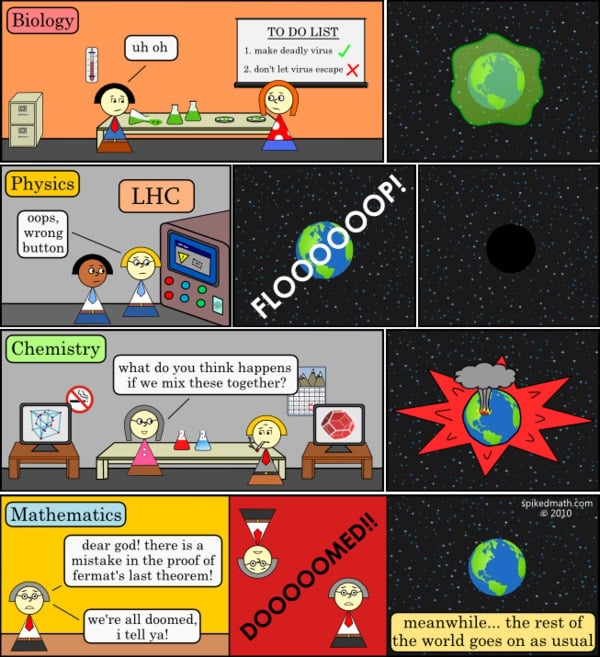this post was submitted on 10 Aug 2023
255 points (92.1% liked)
Comic Strips
12433 readers
3116 users here now
Comic Strips is a community for those who love comic stories.
The rules are simple:
- The post can be a single image, an image gallery, or a link to a specific comic hosted on another site (the author's website, for instance).
- The comic must be a complete story.
- If it is an external link, it must be to a specific story, not to the root of the site.
- You may post comics from others or your own.
- If you are posting a comic of your own, a maximum of one per week is allowed (I know, your comics are great, but this rule helps avoid spam).
- The comic can be in any language, but if it's not in English, OP must include an English translation in the post's 'body' field (note: you don't need to select a specific language when posting a comic).
- Politeness.
- Adult content is not allowed. This community aims to be fun for people of all ages.
Web of links
- [email protected]: "I use Arch btw"
- [email protected]: memes (you don't say!)
founded 1 year ago
MODERATORS
you are viewing a single comment's thread
view the rest of the comments
view the rest of the comments

in computer science, we talk about a mathematical construct called a machine. Different kinds of machines can solve different problems, and the turing machine is the most powerful. It can solve any problem that can be solved by a machine.
Turing machines operate one step at a time, with each step taking the same amount of time. The total number of steps it takes to solve a problem is the time, of that machine.
Some problems have a fixed number of inputs, like "list all the states". These machines have a fixed time. We call this constant time.
Others can have a variable number of inputs, like add up an arbitrary list of numbers. The longer the list is, the longer this takes.
An interesting, and important question is, how fast does the time of a machine go up as we add more inputs?
There are to major groups: the machines were the time goes up in a polynomial way (called P) and the ones were it goes up faster (called NP for non-polynomial). This means, for some machines, you can describe the time with an equation like time=inputs^n where n is any number.
A conjecture is that actually, all problems (that can be solved ) have a machine that can do in P time, thus all NP problems are actually P problems if we find the right machine.
This is important because much of our secret codes and other inportant things that we use today rely on those NP problems, which are really hard to solve. But if it turns out that they are P problems after all, there can be easy solutions.